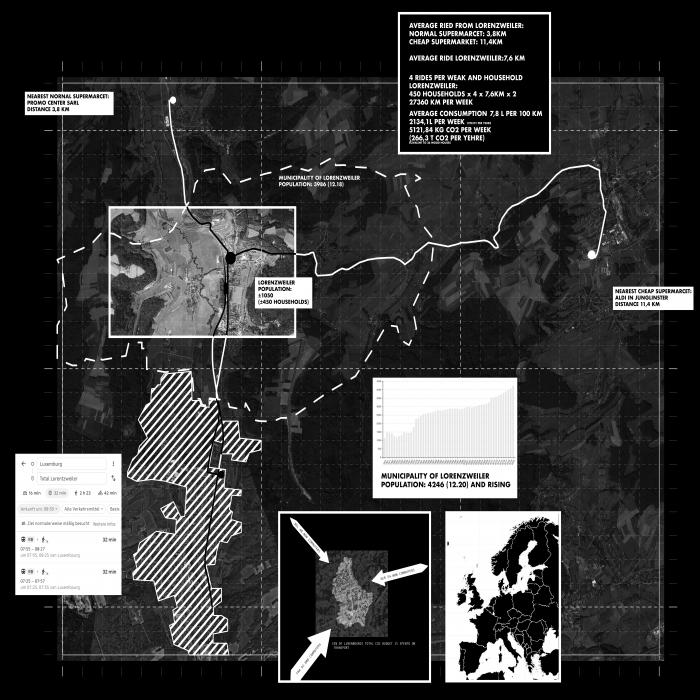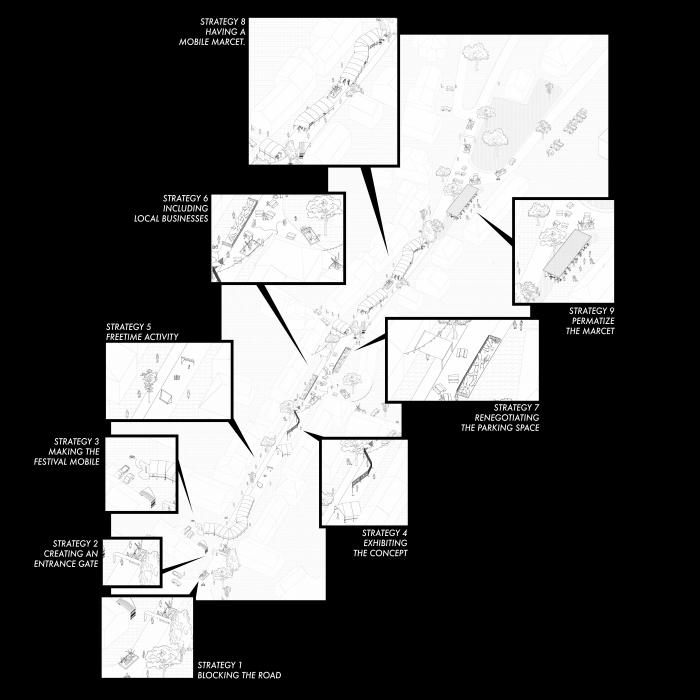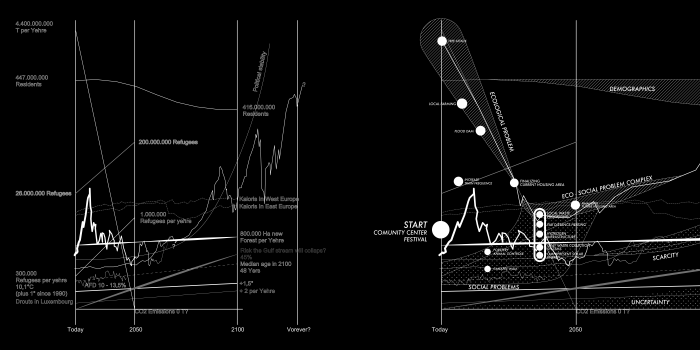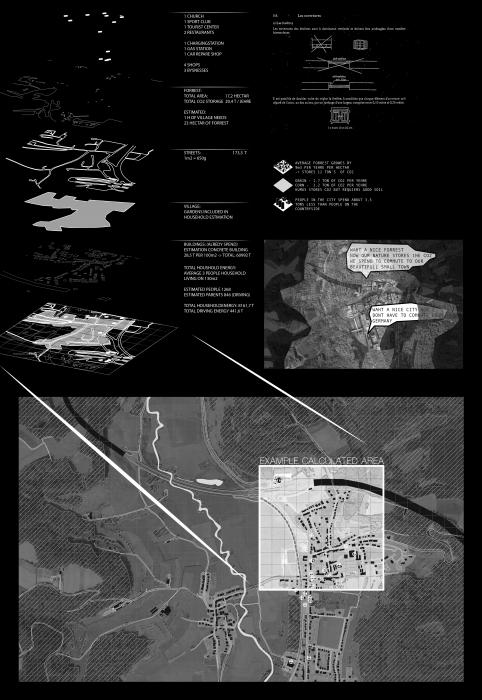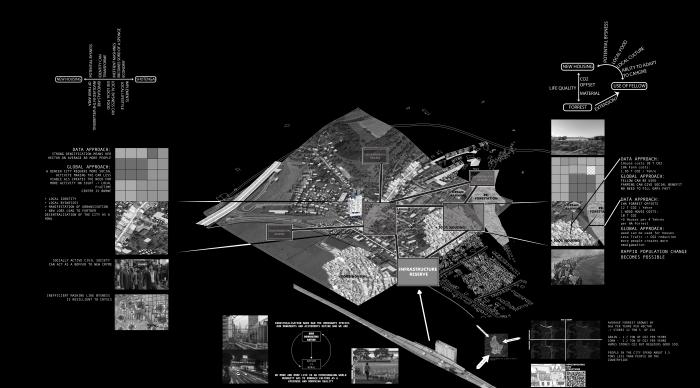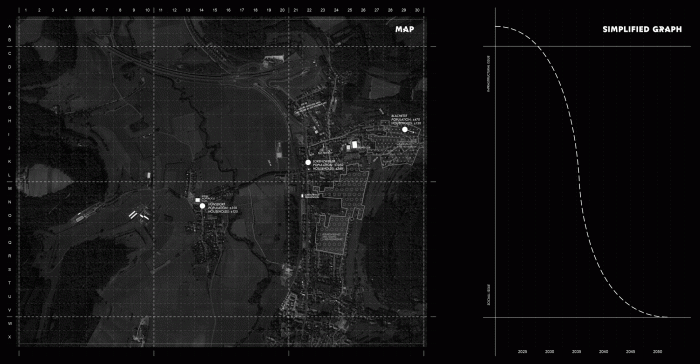I. SUMMARY INFORMATION
Project
269199
Status
Submitted
Award category
Solutions for the co-evolution of built environment and nature
You want to submit
NEW EUROPEAN BAUHAUS RISING STARS : concepts or ideas submitted by young talents (aged 30 or less)
Project title
METABOLISTIC NARRATIVE LORENZWEILER
Full concept/idea title
LUXEMBOURG IN TRANSITION - METABOLISTIC NARRATIVE LORENZWEILER
Description
As part of the initiative ‘Luxembourg in Transition”, a strategy for a more sustainable future was developed, by analysing the transition of the village Lorenzweiler over the next 50 years.The project specifically focused on combining artistic impressions with data of the existing infrastructure and lifestyle.This analysis led to a small-scale concept that could be realized immediately, but as the larger analysis shows, can unfold its impact over the next decades on all aspects of the transition
Where is your concept/idea being developed or intended to be implemented in the EU?
Luxembourg
District de Luxembourg
Lorenzweiler
, 6.144238807291227
6.144238807291227
Lorenzweiler
7370
II. DESCRIPTION OF THE PROJECT
Please provide a summary of your concept/ idea
Due to technological advancements, society was able to construct its own habitat. As a result, we distance ourselves from our real surroundings. The need to control reality through technology has generated a conflict with ourselves, because we neglect that we are a part of nature.
Through a metabolistic approach, I envision technology and nature to be one and the same. We can become more empathic to the systems that govern society and create processes in which individuals and society as a whole can flourish more naturally.
This desire to rearrange the socio-ecological systems leads to the construction of what I call the “monster”. Creating a comprehensive metabolistic strategy requires to work both with measurable data, as well as subtle information about the lifestyle and perceived reality.
To get a better understanding about the issue, we started to visualize important trends such as carbon emissions, immigration, or overall population development as graphs by showing how important they are to the general public over time. It became clear, that with each passing year, social issues would become more and more relevant to the overall success of the desired transition.
I conduct investigations on different areas, such as the forest, the villages building mass and the transport infrastructure, and formulate initial strategies of how these infrastructures can contribute to the overall situation. Those strategies are arrangend on the time-graph, so it can be seen how they can influence each other over the time of the transition.
The forest for example has to be planted immediately, to help mitigate climate change, and later provide sustainable local building materials for the densification of the area.
The car-based lifestyle however poses the largest hurdle in Lorenzweiler. Special emphasis was therefore taken to formulate architecture for a Festival that should promote a local market. It can be held regularly in all villages in the area.
Please give information about the key objectives of your concept/idea in terms of sustainability and how these would be met
The metabolistic approach aims to develop a strategy of ecological transition through the redevelopment of infrastructures. To root Lorenzweiler's strategy of overall transition, I began by conducting a graphical analysis of key trends in Luxembourg’s immediate future. The different trends were arranged in graphs, indicating their overall importance over time.
It became clear, that because the CO2 reduction has to happen rapidly, already by the 2030ys demographics and migration, especially through todays commuters would play a large role.
My mitigation strategy has two overall methods.
Firstly, based on geological data, I designate suitable areas to the growth of a forest for local farming. These processes have to start early, since they will take a while to come to full effect.
Secondly I am proposing, a transition of logistical and transportation infrastructures. The organization of supermarkets in anchorstores has a particularly bad impact on the environment. My proposal suggests the reorganization of supermarkets in favour of small units in every town that are accessible by foot. Together with much improved public transport and the establishment of walking only - zones in the community centres, this measure should lead to a strong reduction in overall car rides. The CO2 emissions for shopping-trips amount to 266 t/year for the village of Lorenzweiler alone.
The architectural part of my proposal focuses on a design of a small festival that could be held regularly in Lorenzweiler, to promote these changes and their effect on the people lifestyle with minimum hurdles.
At this point also the aforementioned forest and farming initiative will come to full effect. They offer the chance for at least partially local supply chaines, and together with the market offer sustainable jobs that directly add to a resilient community.
With that in mind, around 2035 arises an eco friendly opening for new housing to solve the commuting problem.
Please give information about the key objectives of your concept/idea in terms of aesthetics and quality of experience beyond functionality and how these would be met
Metabolistic Urbanism aims to symbiotically treat questions of life quality and sustainability. On an urban scale I connect aesthetics with politics and the social realm through the effort it takes to pursue that style. As a result of that, the visual style is evaluated by its social and environmental impact.
When I begun to investigate Lorenzweiler, the situation was the following:
The car was the main means of transportation, which not only has a negative effect on the environment, but ironically also disconnects people from the nature, which is oftentimes the main reason to move to a suburb.
Huge portions of the area where not developed to their full potential. Despite Luxembourg’s bad soil quality, I could make out some areas that could spawn a forest, and even a few that where suitable for agriculture. The community also has huge areas that are suitable for housing development.
The third aspect was that the zoning laws were designed to promote car ownership and huge gardens. Which of course perpetuates car usage, expands the settlement, and drives up housing costs. It also makes a communal centre less viable.
Most of my interventions, such as forest planting and more housing are very straightforward in this attempt.
My project only gets an immediate architectonic form in the shape of the festival it is important to communicate the ideas social aspect, by the integration of the village only bar, playing options for children as well as the temporary urban furniture that permits cars from driving. I choose an industrial aesthetic (the expandable tents, and the fences) and combined it with playful DIY elements, to visually communicate the idea of symbiotic nature and technology.
The supermarket will unfold its effect on the customers, and generate sustainable jobs.
All cumulative effects of the new community centre, and less economic pressure from reduced car usage and relatively less housing costs will increase the community’s overall life quality.
Please give information about the key objectives of your concept/idea in terms of inclusion and how these would be been met
My concept mainly focuses on economic and social inclusion.
The largest factor plays economy inclusiveness. I tackle this on two levels. Primarily by creating local supply chaines that create jobs in local businesses. Modern supermarkets such as ALDI are in deal positions, to attract as many customers as possible, and therefore offer cheap, efficiently managed prices.
They are able to do that in part, because many logistical costs are redistributed to the customer. In the case of Lorenzweiler the accumulative drives to the supermarket make about 100.000 € per year in gas alone for the centre village. A smaller supermarket that is accessed by walking could avoid this cost almost entirely, and therefore, spawn very good paying jobs (compared to a normal store worker). Similar opportunities will arise in the context of the forestry and framing context. A secondary effect is that the overall reduced need for cars, that is complemented by the expansion of public transport, also leads to less running costs in the entire village.
Lastly will the village be affected by the changes of the densification. If more houses are being built on relatively little land, the overall cost per house will decrease. Next to the obvious economic benefits, this also has the socially inclusive effect of higher economic diversity.
By creating a community centre at the beginning of the transformative process the village’s identity gets the chance to develop alongside the migration and expansion of the next decades, which because those processes happen simultaneously has a high chance of being an inclusive process.
On a surface level, the festival will take place on street level only, and therefore be accessible to all.
Please explain the innovative character of your concept/ idea
In classical urbanism, designs are the outcome of competitions. This design might be innovative in its character or proposed lifestyle, but there is no possible interconnection with other systems. By shifting the focus from a mostly static “image” to the analysis of processes and the design of narratives, metabolistic urbanism moves away from pure design and creates a mélange of rethought consultation and architecture.
From the perspective of metabolism, we currently experience polar opposite movements in our society. On the one hand, the industrial society, that for example advocates for the “homo economics” which symbolizes the maximum rationalization of humanity, but on the other hand we also see a strong escapism, a desire to be as natural as possible. An extreme example might be people trying to live of subsidiary farming. In reality however, it is already clear since decades that neither approach can actually be sustainable. We see the rapid erosion of our social systems and infrastructure, but we are also aware, that there is simply not enough land for all of us to return to a natural lifestyle.
Empathically connecting the technical and natural systems provides the opportunity to work with aesthetic impressions and technical data alike, and to create strategies involving both the ecological and social realm.
The political, social, economic and, most importantly, ecological dimensions of architecture become abundantly clear, when the built and natural environment are considered one and the same life reality, that is constantly subject to human manipulation.
In the concept at hand I use architectural methods to combine a large-scale trend analysis with architectural interventions that work as an urbanistic project, but simultaneously also as a coordinated strategy.
Please detail the plans you have for the further development, promotion and/or implementation of your concept/idea, with a particular attention to the initiatives to be taken before May 2022
At the moment, I am forming a multidisciplinary team of young professionals, to develop the metabolistic strategy. We formed a loose team of 6 to 8 people, who meet on a weekly basis to organize different workshop formats. The objective is to investigate different locations as broadly as possible, and to systematize the metabolistic analysis by putting the contributions in relation to one another.
Each workshop will include participants from both the community itself, as well as external guests and will conclude by exploring the ideas during an exhibition for the community where the workshop is being held.After a number of workshops, all the collected work will be assembled in a book that can serve as a metabolistic inspiration, but also as a guide to create a monster.We are locking forward to host the next actual workshop in August 2021 in Varese north of Milan.
Another concept evolves around the idea of hosting an event, in which participants will take walks around areas that are deemed problematic from a metabolistic standpoint. This performance will conclude in a single location where we hope to mix the individual impressions in a relaxed party like atmosphere. By doing so, this will create a situation where people can naturally exchange their impressions and metabolistic explore options for the observed areas. This event is planned to take place in early 2022.The long-time goal is to establish an urban planning practice that continuously works on this strategy. We are constantly networking with other collectives and individuals, as well as communities to spread our idea and to refine the strategies and communication. Around mid of 2022 most of us will have finished their master thesis, which means that at that time we will double our efforts to get the opportunity to work with communities or companies.The workshops themselves are of course an integral part of inclusion and understanding, and therefore we consider them to be our studios first actual projects.
III. UPLOAD PICTURES
IV. VALIDATION
By ticking this box, you declare that all the information provided in this form is factually correct, that the proposed concept/idea has not been proposed for the New European Bauhaus Rising Stars Awards more than once in the same category.
Yes
